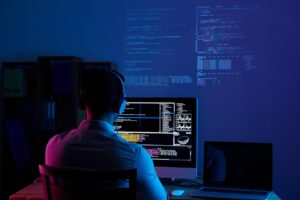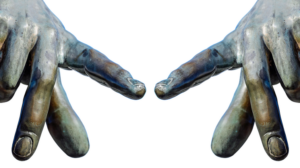
One of the most popular tools for computer vision is OpenCV (Open Source Computer Vision Library). OpenCV is an open-source library of computer vision algorithms and utilities that allows developers to easily build intelligent applications that can recognize objects, track motion, and much more.
Mastering computer vision with OpenCV in Python is a great skill to have, as Python is a versatile and easy-to-learn programming language that is commonly used in the field of data science and machine learning. In this article, we will discuss how you can get started with OpenCV in Python and some of the key concepts you need to understand to master computer vision.
Getting Started with OpenCV in Python:
To get started with OpenCV in Python, you will first need to install the OpenCV library on your machine. You can do this by using the pip package manager in Python:
“`bash
pip install opencv-python
“`
Once you have installed OpenCV, you can start using it in your Python code by importing the library:
“`python
import cv2
“`
Now that you have OpenCV installed and imported into your Python environment, you can start exploring the various functionalities of the library.
Key Concepts in Computer Vision with OpenCV:
1. Image Processing: One of the core tasks in computer vision is image processing. OpenCV provides a wide range of tools and functions for manipulating images, such as resizing, cropping, and filtering. By mastering these image processing techniques, you can enhance the quality of images, extract important features, and prepare them for further analysis.
2. Object Detection: Another important concept in computer vision is object detection, which involves identifying and locating objects within an image or video stream. OpenCV provides pre-trained models and algorithms for object detection, such as Haar cascades and deep learning models like YOLO (You Only Look Once). By mastering object detection with OpenCV, you can create applications that can automatically detect and recognize objects in real-time.
3. Feature Extraction: Feature extraction is the process of identifying and extracting important characteristics or patterns from an image. OpenCV provides various algorithms and techniques for feature extraction, such as corner detection, edge detection, and blob detection. By mastering feature extraction, you can analyze images and videos to identify key points, shapes, and textures that are essential for computer vision tasks.
4. Image Recognition: Image recognition is the process of identifying and categorizing objects within an image or video stream. OpenCV provides tools and algorithms for image recognition, such as template matching, machine learning models, and deep learning frameworks like TensorFlow and Keras. By mastering image recognition with OpenCV, you can build applications that can classify and categorize objects with high accuracy.
Practical Applications of Computer Vision with OpenCV:
There are countless practical applications of computer vision with OpenCV in Python, ranging from facial recognition and object tracking to autonomous driving and medical imaging. Here are a few examples of how you can use OpenCV to solve real-world problems:
1. Facial Recognition: You can use OpenCV to build applications that can detect and recognize faces in images and videos, enabling you to create secure access systems, video surveillance solutions, and personalized user experiences.
2. Object Tracking: OpenCV can be used to track moving objects in videos, allowing you to build applications for traffic monitoring, sports analytics, and object detection in autonomous vehicles.
3. Medical Imaging: OpenCV is widely used in the field of medical imaging to assist doctors in diagnosing diseases, analyzing X-rays, and identifying anomalies in medical scans.
In conclusion, mastering computer vision with OpenCV in Python is a valuable skill that can open up a wide range of opportunities in the fields of artificial intelligence, machine learning, and computer vision. By learning how to effectively use OpenCV for image processing, object detection, feature extraction, and image recognition, you can create intelligent applications that can analyze and understand visual information with high accuracy and efficiency. So, if you are interested in diving into the exciting world of computer vision, be sure to explore the power of OpenCV in Python and start building your own intelligent applications today.





























Add Comment